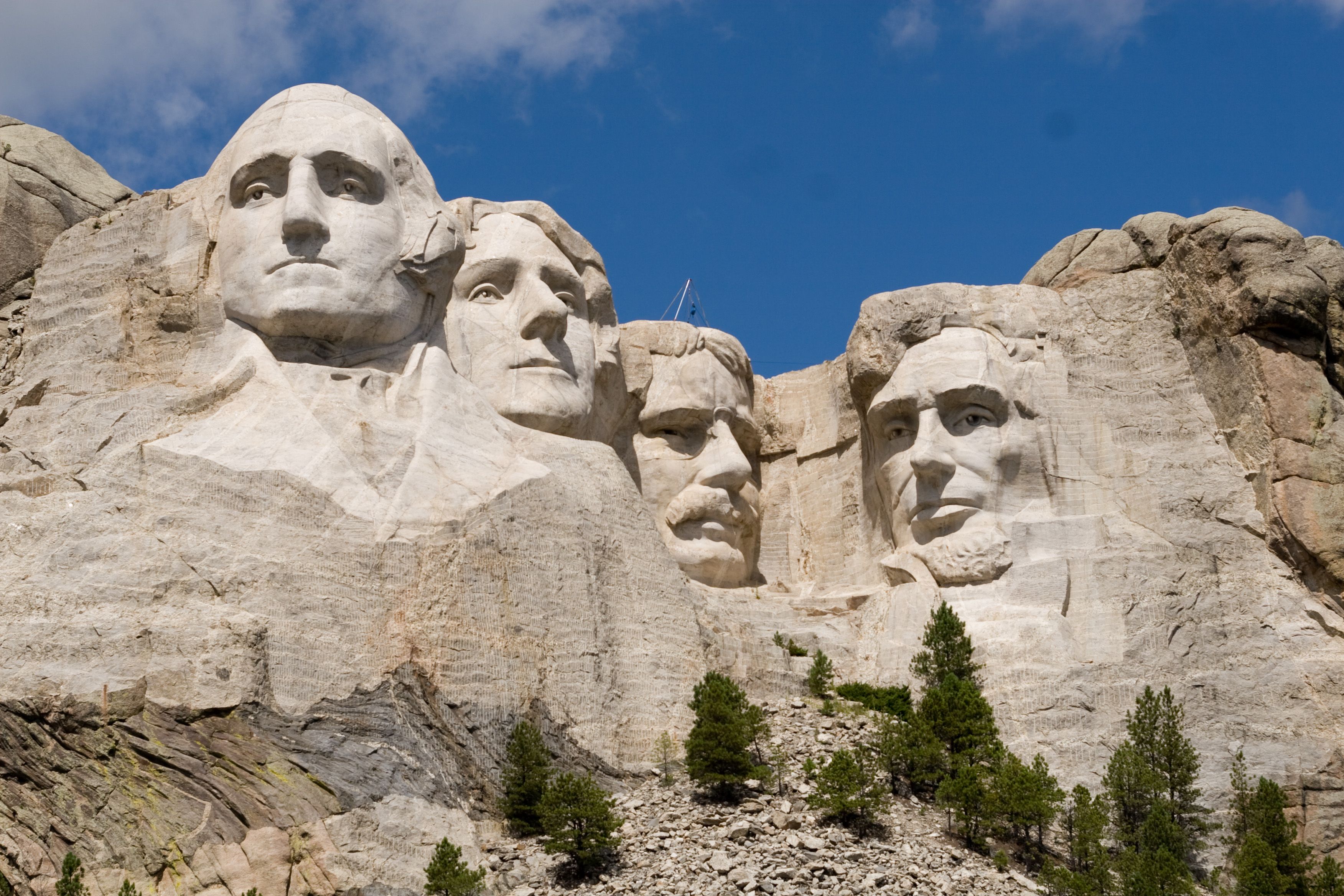When Jens Møller Borglum immigrated in 1864 from Hjørring in Northern Jutland to resettle in the New World, he could hardly have imagined the legacy he would be leaving the recently colonised continent. The son born to him three years later was to become a sculptor whose work expanded far beyond the confines of gallery walls.
With an ego rumoured to be as huge as his large-scale pieces, John Gutzon Borglum was an extravagant patriot who created works of art in honour of his national heroes. The most famous of these works – four sixty-foot heads of the US presidents George Washington, Thomas Jefferson, Theodore Roosevelt and Abraham Lincoln – was carved from granite into the side of a 167m high mountain in the Black Hills of South Dakota.
Who can forget the quite literally cliff-hanging conclusion to the Hitchcock classic ‘North By Northwest’, as hero and villain battle it out on the precipice of Mount Rushmore, dwarfed by the gigantic heads of the dead presidents? Borglum spent 14 summers before he died in 1941 with the ambitious project unfinished. The memorial was completed by his son Lincoln seven months later.
Early aspirations
Borglum Senior was a follower of the recently established Mormon faith, and married two sisters in a state where such practices were legal. John Gutzon Borglum was born on 25 March 1867 to the second of these wives, and though the family spent the early part of his life in Idaho and Utah, they moved to California when he was seven. Borglum Junior’s aspirations toward an artistic career developed early.
He studied art in San Francisco and in Paris at the Academie Julian from 1890 to 1893, where he was deeply moved by the work of sculptor Auguste Rodin, who would have been at the peak of his career then. In 1901, he moved to New York, where he was commissioned to make a sculpture of the apostles for St. John the Divine Cathedral.
Borglum’s work at this time began to combine the obvious influences of Rodin and classicism with his love of the untamed American West, of a frontier country filled with stampeding horses and American Indians. It had not yet reached the vast, grandiose scale of later works, however. His sculpture ‘Mares of Diomedes’ was described as a ‘foaming Wild West stampede in rather transparent mythological clothing’ and was the first American sculpture to have works purchased by New York’s Metropolitan Museum of Art.
OK with KKK?
The sculptures Borglum produced often portrayed figures who epitomised American democracy, one example being a bust of Lincoln carved from a six-ton block of marble and on view today in the Capitol building in Washington, DC. It was the first of his works to explore the simple power of large-scale sculptures. If any of the Danish cultural norms toward self-effacement – the infamous ‘Janteloven’ with its credo of humility – existed in Borglum, they were difficult to find underneath his belief that biggest is best and his nationalistic pride in America.
This nationalism made him the perfect candidate for his 1915 commission to build a 70-foot statue in honour of General Robert E Lee. Borglum had other ideas: he likened that proposal to putting a ‘postage stamp on the side of a barn’ and envisaged something bigger. His work on Stone Mountain, Georgia was to become the first memorial to a Confederate hero and was financed by the Ku Klux Klan. Whether he was actually a supporter of the white supremacist movement is unclear: it seemed his interests in politics of any kind did not stray very far from himself and his work.
In all, Borglum created 170 statues and monuments during his lifetime, most of them glorifying the ideals and heroes of early American society. Though he seems to have been wholly disconnected from his Danish origins, if nothing else, he serves to remind us that Danes were among those who shaped early American society.















